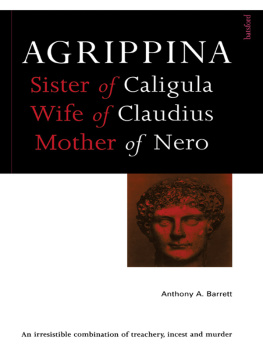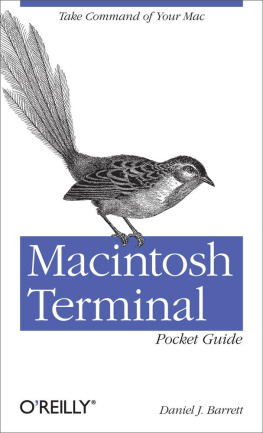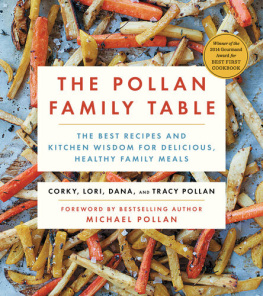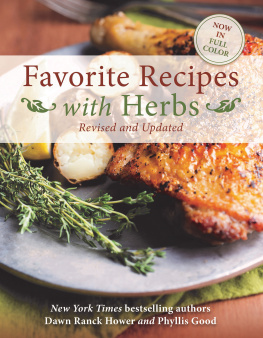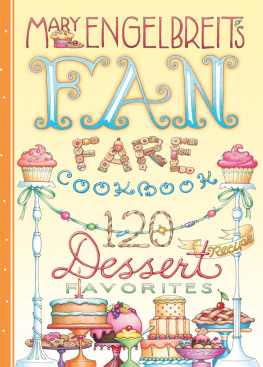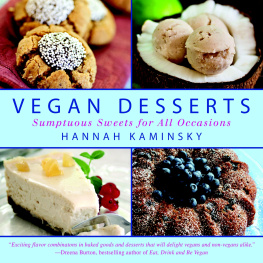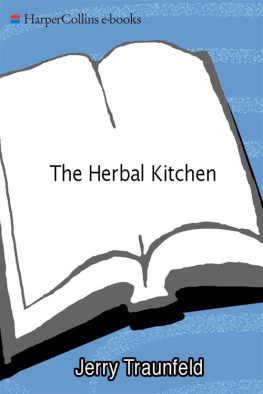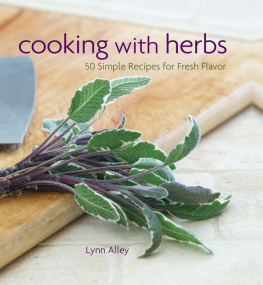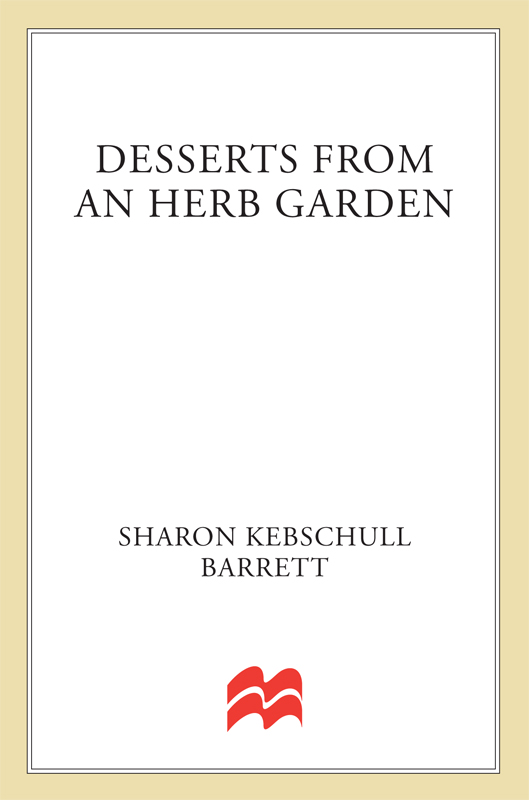
The author and publisher have provided this e-book to you for your personal use only. You may not make this e-book publicly available in any way. Copyright infringement is against the law. If you believe the copy of this e-book you are reading infringes on the authors copyright, please notify the publisher at: us.macmillanusa.com/piracy.
Contents
For James,
with love
Acknowledgments
I am truly blessed to be part of a loving and helpful family; my husband, parents, sister, and brother-in-law all had much to do with getting this book to this point. First, endless thanks to my husband, James; his willingness to let me leave him temporarily for cooking school started all this, and his love and support ever since through my writing and catering have been amazing and invaluable. Likewise, the constant love and support from my parents, Harv and Georgia Kebschullespecially in getting me to attend a publishing workshopfinally gave me the kick I needed to find an agent and get a book on paper. My mother, who passed along a rich heritage of German food from both sides of the family, can truly take credit for my food career; my father, with his always-firm belief in my future as a journalist, can take credit for my writing. I cant say enough about how much they mean to me. And although we hated it at the time, my competitiveness with my sister, Kim Kebschull Otten, for time in the kitchen also spurred my journey to a food career. She is a truly wonderful cook; the best, most patient sister and friend anyone could ever ask for; a top-notch recipe tester (and indexer); and the person I turn to most for food advice and consultation. And her husband, Mark, is my source for excellent ideas for book titlesno small matter, as it turns out!
Many thanks also go to my agent, Angela Miller, for her cheerful patience and persistence in guiding and representing me; and to Marian Lizzi, a dream of an editorI still cant believe how easy it has been to work with her. Thanks also to designers Krista Olson and Gretchen Achilles for the beauty of this book; and from way back, thanks to Mark Bittman, who gave me my start in food writing.
Introduction
I never knew oregano was such a popular herb, but invariably Oregano in desserts? is the reaction I get when I tell people what my book is about. No, its not that weirdno oregano in this book, just sweet herbs that add flair to common flavors.
I got started with sweet herbs through my baking catering business, Dessert First. In the beginning, pineapple sage was about as exotic an herb as I used, and then only for garnish. Meanwhile, I was putting my favorites, rosemary and basil, into nearly every dinner I cooked. After one fabulous attempt at combining rosemary and lemon in a cake, the light finally dawned: Why wasnt I trying herbs in more of my desserts?
After all, herbs give a punch to my desserts I cant get in any other way, adding another dimension, another layer of interest.
From lemon and rosemary, I moved to basil with blueberries. Success led me to tarragon with chocolate, lemon balm wherever I used to use lemon zest, sage and thyme with apples, mint in all its forms with chocolate and fruit, and lavender with cherries.
These combinations arent as unusual as they may first sound. In many of the desserts it is impossible to identify the herb used; especially with the more unusual herbs, Ive aimed for a subtle flavor that enhances the dessert. With the exception of mint, to which our palates are accustomed in strong doses, I dont care for food that screams basil or thyme, so you wont find that here. Instead, this is food with interesting flavors that step out of the ordinary but shy away from the bizarre. And its food thats rapidly becoming popular in restaurants. As pastry chefs look for bold flavors to match the rest of the meal, theyre turning to herbs for both fancy and down-home desserts. A famous French chef combines basil with strawberries, while locally, Ive seen rosemary in a sweet biscuit topped with cooked apples.
As youll see from the recipes, my tastes run all over the map. I love complex, architectural desserts in high-end restaurants. I also love homely cobblers and my mothers lemon meringue pie, which starts with a box of pudding. This book reflects all my tastes, from a simple sorbet based on a bag of frozen fruit, to a four-ingredient shortbread, to a spectacular napoleon of white chocolate, lavender, and blueberries. Simple or sophisticated, time-consuming or quickthere should be something here for whatever mood strikes you.
And if you dont have a garden overflowing with herbs, youll still find a lot here you can make. Those who find themselves a bit shy about putting herbs into their baking could start with the desserts made with mint; its a safe way to open your palate to sweet herbs. From there, try desserts with basil, tarragon, rosemary, or thymeall herbs that are now available in many grocery stores, or easy to grow in a small window pot.
Once youve tried a few of these, you may find your window garden expanding, as you plant all the specialized sweet herbs out there. And before you know it, friends will be asking you the oregano question. But dont worry about scaring them offtheyll soon consider you a baker with amazing gifts. And if you do worry, you can always keep secret which herb youve tried today. With these recipes, ignorance will truly be bliss.
Recipes Listed by Herb
ALLSPICE
ANGELICA
ANISE HYSSOP
BALM, LEMON See Lemon Balm
BALM, LIME See Lime Balm
BASIL
SWEET BASIL
CINNAMON BASIL
LEMON BASIL
LIME BASIL
BAY
CILANTRO
FENNEL
LAVENDER
LEMON BALM
LEMON VERBENA
LIME BALM
MARJORAM
MINT
BANANA MINT
CHOCOLATE MINT
ORANGE MINT
PINEAPPLE MINT
ROSEMARY
SAGE
PINEAPPLE SAGE
SAVORY
TARRAGON
THYME
LEMON THYME
VERBENA, LEMON See Lemon Verbena
Dessert Herbs and Other Ingredients
NOTES FROM A DESSERT-HERB GARDENER
Because we live in a solar house, which requires full shade in summer, there are few sunny spots right by any door. This has forced me to plant vegetables down the hill by the street; I try to surround them with flowers so the garden doesnt look quite so ragged, especially in late summer. Over time, though, my herbs have begun taking over the space; while Id like a few more tomatoes, the herbs have made my garden grow prettier each year.
That rampant growth, although constantly stymied by my cuttings, has proved to me the wisdom of growing herbs in good soil. Many garden books talk about how herbs will thrive anywhere, even in poor soil. With few exceptions, my experience has proved otherwise. Herbs grow best in a good, loose soil. For me, this meant adding some bags of compost and humus to my clay soil before I planted anything, digging in what mulch has broken down each year, and adding more mulch routinely.
Super-rich soil is rarely necessary (and may produce plants with less flavor), but if youre having trouble growing herbs, try pots filled with a high-quality potting soil (such a pot provided me with some of the best basil Ive ever grown, in the one sunny spot near my back door). As a bonus, you can bring those pots indoors to have fresh herbs through the winter. The caveat: The herbs I grow indoors taste much milder than those in my garden, a function of either the very rich potting soil or the lack of heat. Thats why I always taste my herbs before I use them to judge their strength (after you do this for a while, youll really begin to notice the differences). They often taste strongest outdoors and later in summer, weakest indoors. I usually double the amount called for when using herbs from indoor pots.



